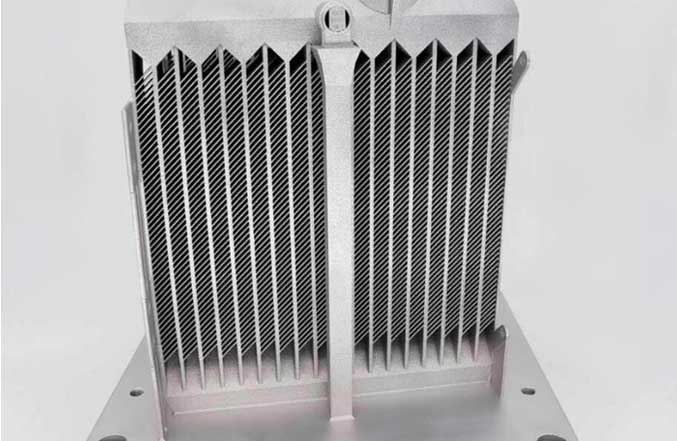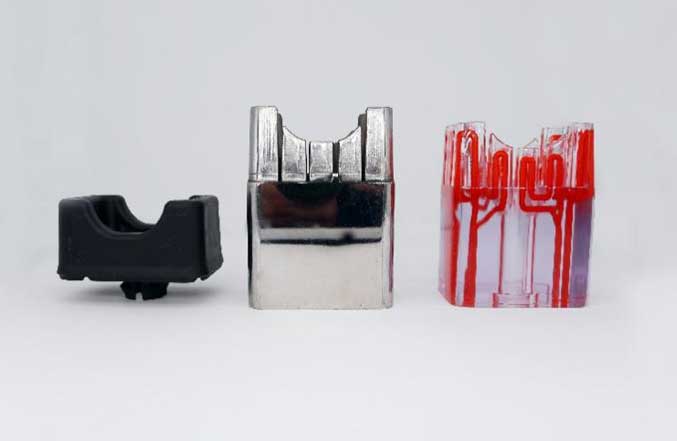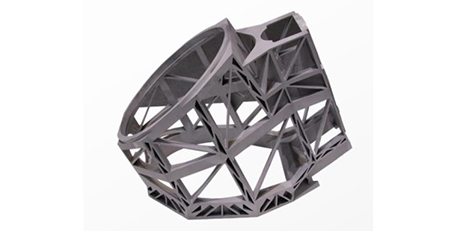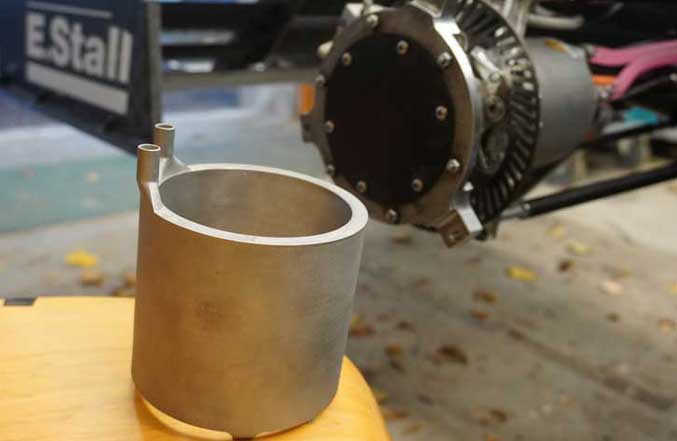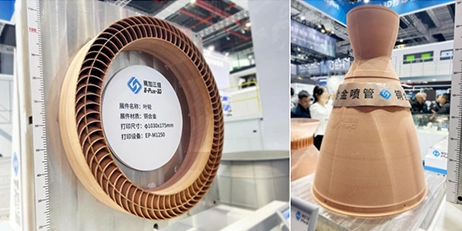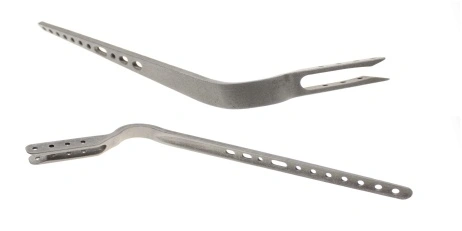The heat exchanger is used for temperature control. It is one of the most important parts of industrial equipment. The heat exchanger allows heat to be transferred from one fluid to another, and its main purpose is to heat or cool the element. In the industrial field, the cooling function is more often used to prevent equipment from overheating.
The use of heat exchangers is very wide. The engines of cars, ships, and airplanes all use heat exchangers to work more efficiently. Components in air conditioning and cooling systems (such as refrigerators) also require heat exchangers.

The heat exchanger that was 3D printed by EPLUS3D for the Formula College Racing Team
The benefits of 3D printing heat exchangers are as the following perspectives:
Access to more complex design
When designing heat exchangers, this advantage can be used to create walls as thin as 200 microns and small, complex channels within components. This means that engineers can design heat exchangers with a larger internal heat transfer area. The larger the surface area, the more heat can be removed, which improves the performance of the heat exchanger.
Lightweight and Generative design
Most heat exchangers today have a linear, rectangular, or tube and shell design. Due to their unique shape, installing these heat exchangers into equipment can be challenging. On the other hand, 3D printing allows engineers to make equipment lighter and smaller, but with the same or better performance.
Stability and quality
In addition, a 3D printed heat exchanger is built-in in one operation, so there are no seams or seams that may cause leakage. Because the production is simpler and clearer, the process variability is lower and the overall quality is expected to be higher.
In a word, Heat exchangers are an excellent application for 3D printing. This technology has great design flexibility, enabling a more compact shape and higher performance. With its unique features, 3D printing can be a key technology in heat exchanger manufacturing. This flexible technology allows heat exchanger manufacturers to meet new size and performance requirements.
If you want to discover your own business with additive manufacturing solutions, welcome to contact us.
